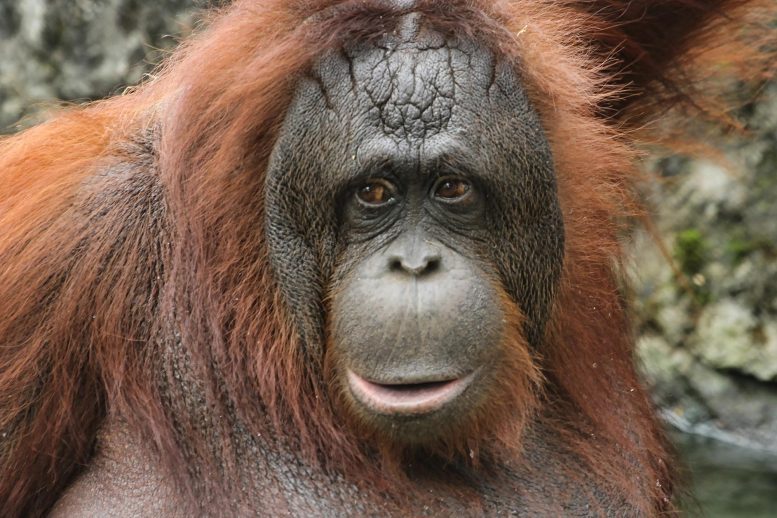
A new study reveals the diverse vocal patterns of Bornean orangutans, identifying three distinct pulse types in their long calls. This research advances our understanding of orangutan communication and highlights the complexity of vocalization in the animal kingdom.
Researchers uncover the diverse vocal patterns of Bornean orangutans, identifying three distinct pulse types in their long calls, and emphasizing the complexity of animal vocalizations.
In new research published today (May 14) in PeerJ Life & Environment, scientists have revealed the intricate vocal patterns of Bornean orangutans, shedding new light on the complexities of their communication. Titled “Vocal Complexity in the Long Calls of Bornean Orangutans,” the study, led by Dr. Wendy Erb from the K. Lisa Yang Center for Conservation Bioacoustics at the Cornell Lab of Ornithology, unveils the remarkable diversity and variability within orangutan long call vocalizations.
Understanding Orangutan Communication
Orangutans, the charismatic great apes of Southeast Asia, are known for their complex social behaviors and vocal communication. However, understanding the nuances of their vocal repertoire has posed a significant challenge for researchers. Dr. Wendy Erb and her team embarked on a pioneering journey to decipher the mysteries of orangutan vocalizations, and their findings are set to revolutionize our understanding of these remarkable primates.
The Motivation Behind the Study
Dr. Erb, a primatologist specializing in the behavior and communication of wild primates, explained the motivation behind the study: “Our research aimed to unravel the complexities of orangutan long calls, which play a crucial role in their communication across vast distances in the dense rainforests of Indonesia. Over the course of three years, we accumulated hundreds of long call recordings, revealing a fascinating array of vocal diversity.”
Methodology and Findings
The study employed a multidimensional approach, combining traditional audio-visual methods with state-of-the-art machine learning techniques. Dr. Erb and her team meticulously analyzed the long calls of 13 individual orangutans, aiming to determine the number of pulse types present in their vocalizations and evaluate their gradation.
“Through a combination of supervised and unsupervised analytical methods, we identified three distinct pulse types that were well differentiated by both humans and machines,” Dr. Erb elaborated. “While our study represents a significant step forward in understanding orangutan communication, there is still much to uncover. Orangutans may possess a far greater repertoire of sound types than we have described, highlighting the complexity of their vocal system.”
Broader Implications and Future Research
The research not only deepens our understanding of orangutan communication but also underscores the broader concept of vocal complexity in the animal kingdom. Dr. Erb emphasized the collaborative effort behind the study, acknowledging the dedication of her team and the importance of interdisciplinary collaboration in scientific research.
“This study represents the culmination of months of hard work and collaboration, demonstrating the power of collective effort in advancing our understanding of nature’s intricacies,” Dr. Erb stated. “We hope that our findings inspire further exploration of vocal complexity across different species and pave the way for future discoveries in animal communication.”
Reference: “Vocal Complexity in the Long Calls of Bornean Orangutans” by Wendy M. Erb, Whitney Ross, Haley Kazanecki, Tatang Mitra Setia, Shyam Madhusudhana and Dena J. Clink, 14 May 2024, PeerJ Life & Environment.
DOI: 10.7717/peerj.17320









Be the first to comment on "Hidden Complexity: Unlocking the Mysteries of Orangutan Communication"